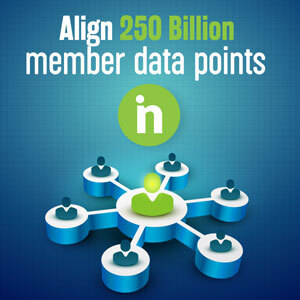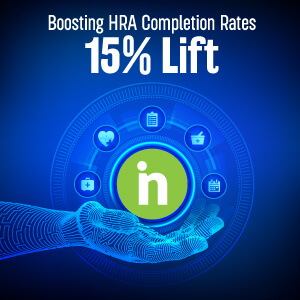Fixing Healthcare Onboarding: Building an Effective Engagement Strategy
In our previous blog post, we discussed the onboarding pitfalls of new members by identifying common pain points. Now that you are armed with the knowledge that information overload and fragmented communications are leading to member dissatisfaction and disengagement, you can work on fixing your onboarding strategy by building an effective member engagement strategy.
Engaging members effectively during the first 90 days requires strategic planning, member-centric approaches, and innovative solutions. Health plans that excel in this area prioritize personalization, proactive communication, and trust-building to create a seamless onboarding experience.
Below are actionable strategies our panelists from “Mastering the First 90 Days: Transform Member Experience When It Matters Most” recommend health plans adopt to improve engagement.
Establish Trust Before Making Demands
Members are often inundated with requests shortly after enrollment, such as completing health risk assessments, scheduling wellness visits, or verifying personal information. However, health plans must first focus on building trust and fostering relationships.
Key Approaches:
- Lead with Value: Ensure early communications emphasize how the plan supports the member, such as providing easy access to care, wellness resources, or financial guidance. Avoid starting with transactional requests.
- Understand Member Fragility: Ashley Conger highlighted that many members—particularly those in Medicaid or Medicare—face significant challenges, such as financial instability, health issues, or limited access to technology. Establishing trust requires acknowledging and addressing these realities before making demands.
- Provide Clear, Simple Communication: Avoid healthcare jargon and present information in a way accessible to members with varying levels of health literacy.
Leverage Technology to Meet Members Where They Are
Technology is a powerful tool for engagement, but only if it is designed with the member in mind. A well-executed digital strategy can streamline onboarding, provide real-time support, and enhance overall satisfaction.
Key Approaches:
- Omnichannel Communication: Use multiple channels to connect with members, such as text messages, emails, phone calls, and mobile apps. Tailor the channel based on member preferences and needs.
- Proactive Outreach: Use data analytics to predict and engage member needs at the right time. For example, sending a reminder to schedule a follow-up appointment after a recent visit shows attentiveness and care.
- Localized Campaigns: Pairing digital outreach with localized strategies can significantly impact, especially in underserved communities.
During the webinar, Ashley Conger shared a compelling example of how leveraging technology and localized strategies impacted member engagement and health outcomes. The campaign was focused on reducing emergency department utilization among Medicaid members, a population often facing unique challenges like limited access to preventive care or primary care providers.
High rates of non-emergency ED visits drove up costs and reflected gaps in member engagement. Many members used the ED as their primary point of care because they lacked awareness of alternative options or felt disconnected from their health plan. This strained the healthcare system and failed to address the underlying issues contributing to members’ reliance on the ED.
To tackle this, Ashley and her team implemented a localized, tech-enabled campaign designed to educate members about appropriate care options and encourage them to use preventive and primary care services instead of the ED.
The campaign achieved remarkable outcomes:
- 50% reduction in non-emergency ED visits among targeted members.
- Improved awareness of alternative care options, as evidenced by increased primary care visits and urgent care utilization.
- Higher engagement rates in preventive care programs helped address underlying health issues before they escalated.
Ensure Consistency Across Touchpoints
Fragmented communications can confuse and frustrate members, undermining engagement efforts. Consistency in messaging, tone, and information is essential to building a cohesive experience.
Key Approaches:
- Centralize Messaging: Establish a single source of truth for all member-facing communications to ensure that different teams and partners provide consistent information.
- Train Frontline Staff: Customer service representatives and community partners should have the same tools and information to answer member questions uniformly.
- Integrate Systems: Use enterprise-wide platforms to ensure all departments can access the same member data, reducing the likelihood of conflicting or redundant outreach. Joe Pulice provided a poignant example from his time at Molina Healthcare. The company transitioned from fragmented point solutions to a unified system. This shift ensured all departments accessed the same member data, reducing redundancies and conflicting messaging. By centralizing communication, members received clear, consistent information across all touchpoints.
Personalize the Member Experience
Generic, one-size-fits-all communications can alienate members. Personalization helps members feel seen and valued, increasing their likelihood of engaging with the health plan. A recent Deloitte study found that member satisfaction scores were 23% higher when using personalized messaging.
Key Approaches:
- Segment Members by Needs: To tailor messaging to group members by age, health conditions, or digital literacy. For instance, young professionals may prefer app-based interactions, while seniors may require more hands-on support.
- Use Member Data Strategically: Leverage AI and analytics to create personalized communications, such as reminding members to refill prescriptions or offering resources specific to their health conditions.
- Humanize the Journey: To make interactions feel less robotic, include personalized greetings, references to the member’s history, or specific next steps. AI tools can be particularly useful in creating customized outreach.
Support Accessibility and Inclusivity
Accessibility is a cornerstone of effective engagement. Members with disabilities, limited English proficiency, or low health literacy require additional support to understand and utilize their benefits fully.
Key Approaches:
- Multilingual Support: Offer communications in multiple languages and ensure that frontline staff can assist non-English-speaking members.
- Accessible Formats: Provide materials in large print, audio, or braille formats and ensure that digital tools meet accessibility standards (e.g., screen reader compatibility). Barriers such as poor translation or insufficient support for members with disabilities can alienate vulnerable populations.
- Simplify Messaging: Use plain language to ensure members of all literacy levels understand their benefits and next steps. Simplifying language and providing easily digestible resources, such as infographics or step-by-step guides, can bridge gaps in understanding and make healthcare more accessible.
Empower Members Through Education
Members are more likely to engage when they feel confident in navigating their health plan and understanding their benefits. Education can help demystify complex processes and reduce reliance on customer support.
Key Approaches:
- Create Member-Friendly Resources: Offer video tutorials, FAQs, and infographics that explain common topics, such as how to schedule appointments or access digital tools.
- Host Virtual Onboarding Sessions: Conduct live or recorded webinars that walk members through their benefits and answer frequently asked questions.
- Promote Preventative Care: Highlight the importance of preventive health measures, such as annual wellness visits, and make it easy for members to schedule these appointments.
Foster Early Engagement with Incentives
Offering incentives can encourage members to take desired actions early in their journey. These rewards can also serve as a positive reinforcement mechanism, boosting satisfaction.
Key Approaches:
- Incentivize Health Risk Assessments: Offer gift cards, rewards points, or discounts for completing onboarding tasks like HRAs or wellness visits.
- Gamify Engagement: Use a points-based system to reward members for healthy behaviors, such as exercising, attending screenings, or participating in wellness programs.
- Promote Rewards Through Multiple Channels: Ensure members are aware of incentives through consistent messaging across emails, texts, and portals.
Maintain Flexibility and Iterate
Health plans must remain agile to address member feedback and adapt to changing needs. Continuous improvement ensures that engagement strategies remain relevant and effective.
Key Approaches:
- Gather Member Feedback: Use surveys, focus groups, and analytics to understand what works and what doesn’t in your engagement strategy.
- Iterate Based on Data: Refine campaigns and communications based on member behavior and feedback to improve their effectiveness continually.
- Monitor Metrics: Track key performance indicators, such as member satisfaction scores, retention rates, and onboarding task completion, to assess the success of engagement efforts.
The Bottom Line
Building an effective engagement strategy during the first 90 days is essential for creating a lasting positive relationship with members. By focusing on trust, personalization, consistency, and accessibility, health plans can transform this critical period into a foundation for long-term loyalty and satisfaction.
Want to learn more? Listen to the entire webinar here.
Want to know the secret to kick-starting your 90-day member engagement transformation? Let’s talk.






